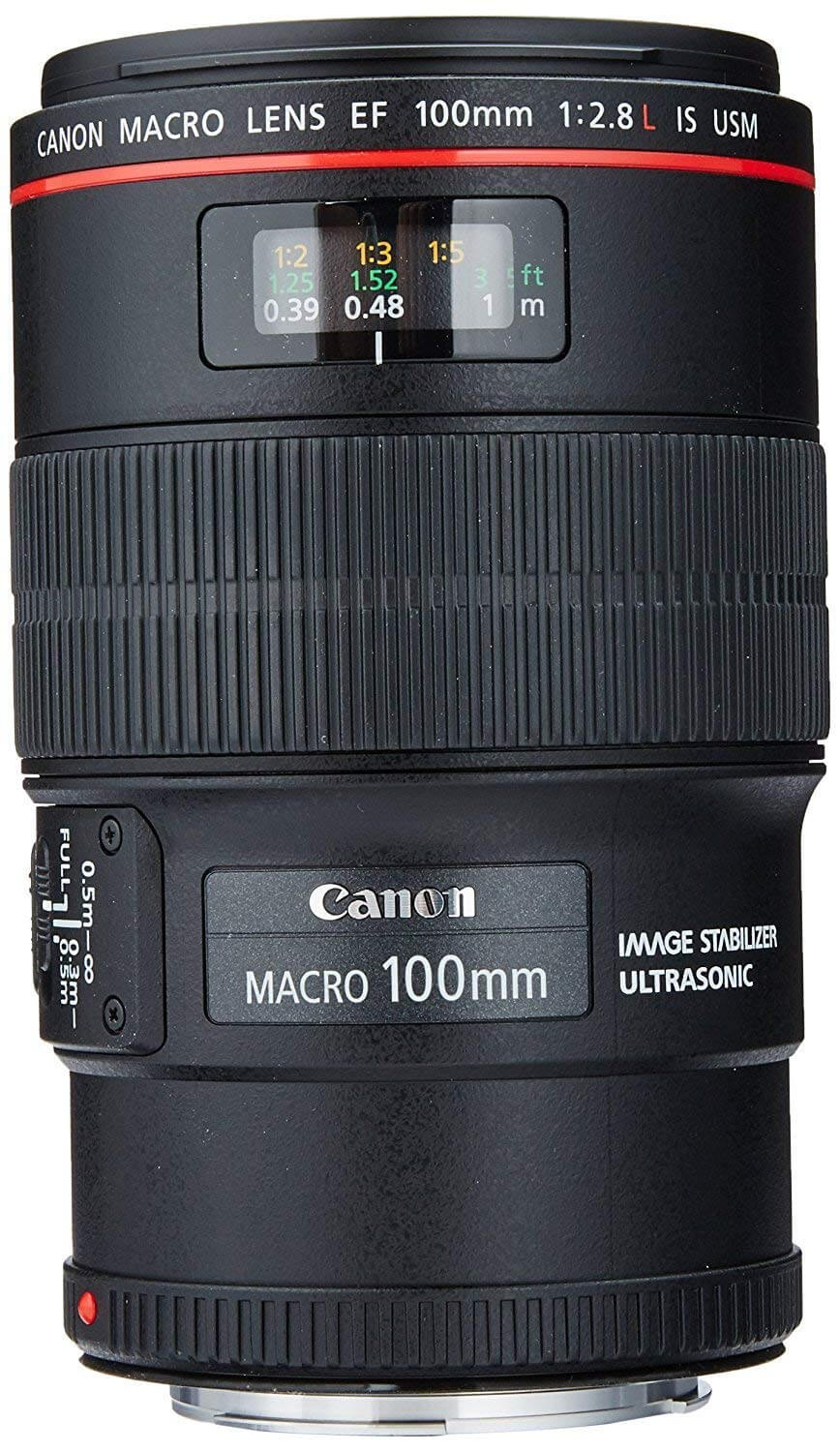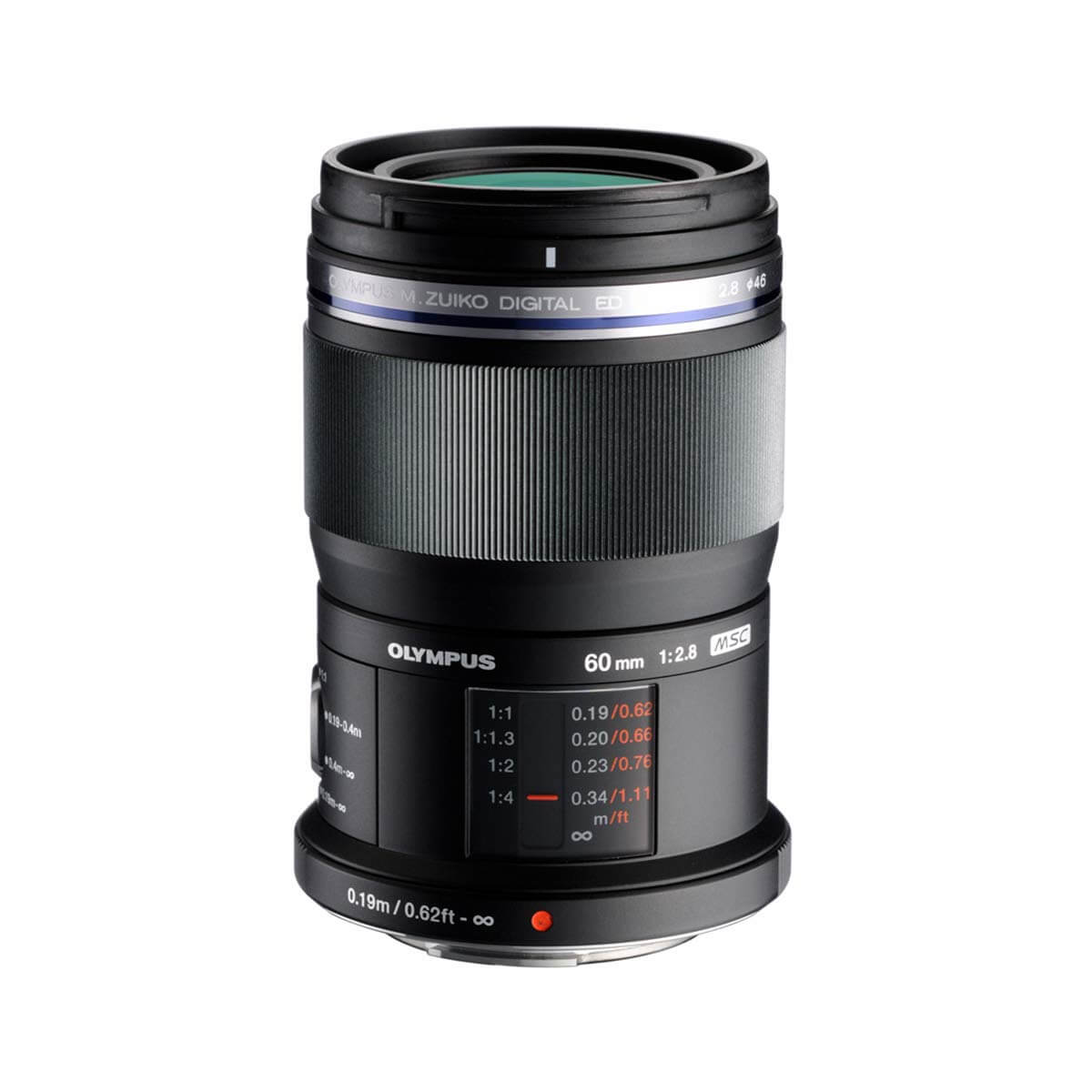Lens Highlights
- Light macro lens featuring Image Stabilization for EOS M series digital cameras.
- Built-in Macro Lite which, when enabled, automatically supplies light to your photos as needed, helping to provide a better sense of depth and dimension.
- Autofocus lens capable of focusing at infinity in normal shooting and macro shooting with up to 1.2x magnification.
- Hybrid IS helps reduce camera shake for enjoyable handheld photography.
- Stepping motor (lead screw-type STM) helps provide smooth and quiet operation when taking photos, and near-silence when shooting videos.
The EF-M 28mm Macro lens is probably the most interesting lens in the EOS-M Lineup.
It's a very affordable, very compact "Super Macro" with an image stabilizer and built in LED lights.
The lens itself is very lightweight and appears to be a light aluminum with a plastic mount. Note that this is an EF-M lens and will only work on the EOS-M cameras (EOS-M1, M2, M3) and not a DSLR.
Included in the box are the lens, a lens-cap (EF-M28) and a lens hood. Unlike most lenses, Canon included a "free" lens hood with this one as it's required to use the hood to get a screw-in filter mount. No bag/storage is included with the lens, but the LP-811 is recommended.
The lens itself has 2 buttons on it: A light and a "release" lever. When the lens is attached and the camera is turned on, you'll need to hold the release lever and select either "Normal/Macro" or "Super Macro" to be able to take photos. The default position will not allow you to take photos and is more of a position to store the lens.
Selecting the normal mode allows typical autofocus as well as "Macro" mode (up to 1x magnification). Selecting Super Macro allows up to 1.2x magnification off the subject, but does not allow normal focusing distances (it only focuses at a very close-up macro level).
I found Autofocus to work fairly well (always tricky at such close magnifications) but was a bit disappointed that you need to use the menus to select either AF or MF. I wasn't able to get the AF+MF option to allow for both auto and manual focus and there is no switch on the lens itself.
The stabilizer works very nicely and is a great option to have when dealing with such close-up levels.
The LED additional is actually really great. When pressing the Light button on the lens, small LEDs on the left/right of the lens will turn on, allowing you to get clear shots of objects up-close. The default is for both LEDs to be on at bright mode, clicking it again will turn it to a dim mode, you can also toggle each light on/off or bright/dim, so if you only want the left LED on, you can do that. When focusing up-close, this LED comes in handy a lot as you otherwise wouldn't be able to light a subject. Great addition here!
The lens itself has no filter threading. If you want to add a filter (43mm thread) you can attach the included Hood to the lens.. note that doing this WILL block the LED's and render them useless. You'll need to decide if you want the filter threading or the LED. This is a bit disappointing.
One other piece of information to note is that this is a fixed 28mm lens, which is pretty wide for a macro. You need to be in VERY close (the minimum focusing distance is probably under 1 inch from the front of the lens) meaning that for live-animals this might be too close.. for any other subjects, you should be Ok.
The fixed lens also has a widest aperture of f3.5 which isn't bad.. for most macro work you'll probably end up bumping that to f8.
I found the LED light helped in all situations but did require you to be VERY close. This will not light anything more than a few inches from the lens.
Detail was very high, you can see many small details that would otherwise go un-noticed by the human eye, and even at a wide aperture it's very sharp. I did not notice any fringing even on high contrast subjects up-close.
Overall this is a great additional to the EF-M system. The lens has a lot of features, included some never seen on other lenses in the past. The compact size and low price make it even better, but the short focusing distance may turn some away. The fact it can be used as a normal lens as well as a macro (and super macro) may make it much more useful to some people, but those wanting to shoot live subjects may want to look into a lens such as a 100 or 150mm macro.









